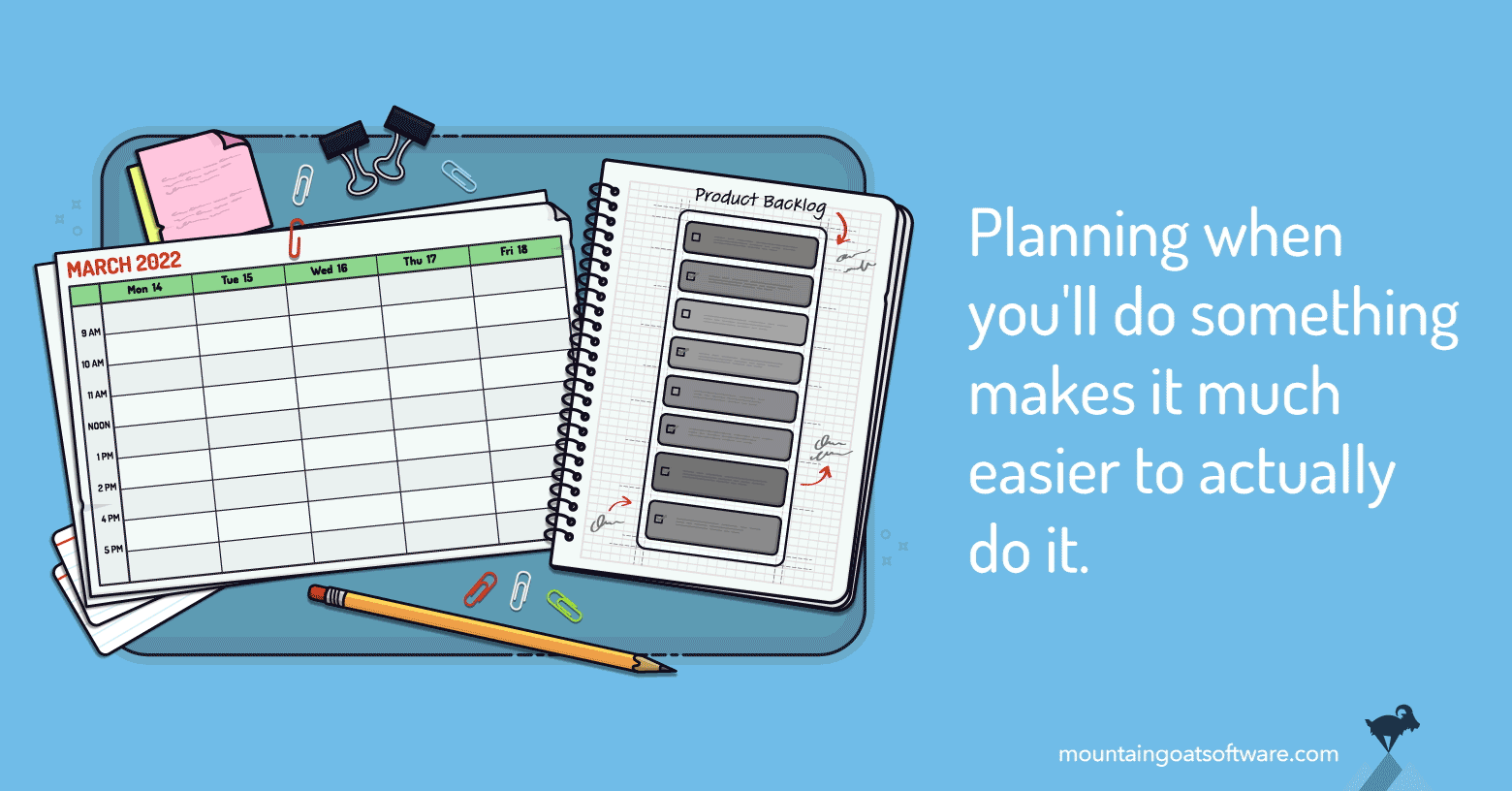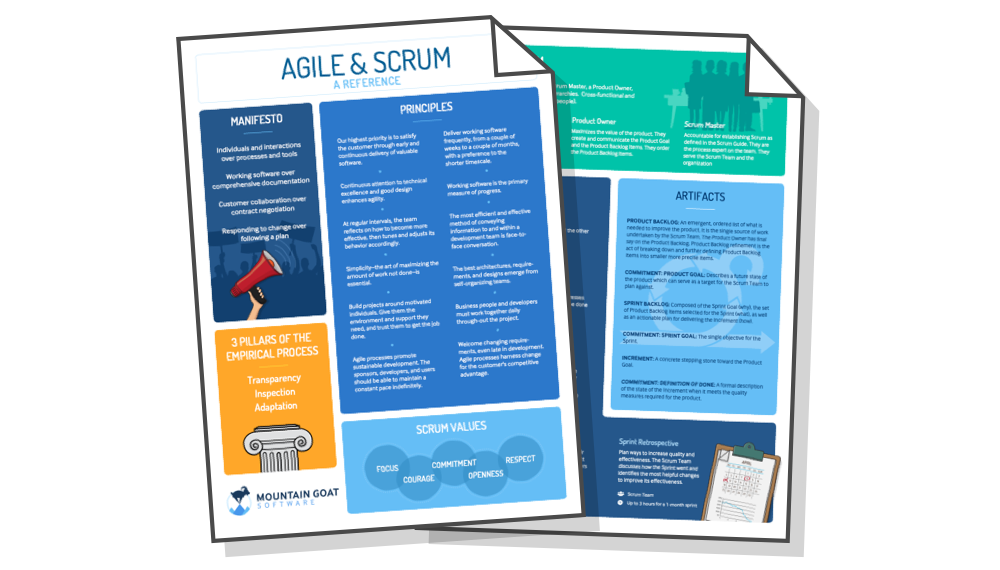Did you notice that I didn’t share a blog a couple of weeks ago? Probably not, but my commitment has been to write and post a new blog every other Tuesday. And I’ve been pretty consistent with that, unless it’s a holiday or I’m taking a planned break in the summer.
But a few weeks ago, I didn’t post a new blog. I didn’t even get started writing it. I fully intended to. It was even on my Sprint Backlog for the week. But it didn't happen. Here’s why.
My Struggle with a Product Backlog
I’ve found that making a backlog each week for myself hasn’t been working as well as it should. Every Monday morning, I’d plan an ambitious week. And then, inevitably, the week would slip away. And some work—sometimes high priority work like writing a blog—would go unfinished.
Fortunately, I found a better way to make sure that high priority work happens.
Implementation Intentions
What I’m trying currently (and it seems to be working) is establishing an implementation intention for each of my critical-to-complete backlog items.
Implementation intentions are the idea of Peter Gollwitzer, a psychology professor at New York University. Gollwitzer’s research found that simply saying (or thinking), “I intend to do such-and-such" was not likely to lead to someone doing such-and-such. Gollwitzer writes, "Successful goal attainment requires that problems associated with getting started and persisting until the goal is reached are effectively solved."
Gollwitzer goes on to explain that implementation intentions "specify the when, where, and how of responses leading to goal attainment. They have the structure of 'When situation x arises, I will perform response v!'"
For example, I intend to eat better will usually not lead to eating better. However, forming a plan for how I will implement that intention does make me more likely to do it. So instead of just intending to eat better, I can tell myself, “If I am hungry after dinner (the situation), I will eat an apple (my response).”
Implementation intentions can also be time-based: “At 2 p.m., I will go for a 30-minute walk.”
My Time-Based Implementation Intentions
It has been time-based implementation intentions that are helping me complete my high-priority backlog items, like blogs. As I write this, it is 9:26 a.m. on a Friday morning. Yesterday, I planned that I would write between 9:00 and 11:00 a.m., and so that is what I’m doing.
If I had begun today with just a weak intention of ‘write a blog post,’ I probably would have let other work intrude. Instead I planned my sprint work with a time-based intention, and moved this backlog item to done. Time-based intentions work for me, and for many like me.
Once again, Gollwitzer backs me up. He writes about how in a 1999 study of people who had a goal to take a daily vitamin pill, Sheeran and Orbell found that "participants who had been induced to commit themselves to when and where they would take a pill each day missed fewer pills than participants who had formed only the respective goal intentions (i.e., to take a pill each day)." A spoonful of sugar may indeed help the medicine go down, but for me and for others, a time-based implementation intention works better.
Webinars Are a Good Example
Webinars make a great example of the power of implementation intentions. Imagine learning about a webinar you’d like to attend. It’s at 2 p.m. on Tuesday, so you add that to your calendar. Based on average webinar show-up rates, you’re about 40% likely to attend.
But if you miss the webinar, you’re only about half as likely to watch the replay. It’s easier to watch the replay—you can do it whenever you’d like. Yet replay watch rates are only half the live rates.
Why?
Because you set an implementation intention to watch the live session. Tuesday at 2 p.m. is scheduled and reserved for watching the webinar. The replay is just an item on a backlog or to-do list. As such it’s as easy to skip as it is for me to eat something sweet after dinner instead of the more healthful apple.
Implementation Intentions and Agile Projects
There are a couple of ways implementation intentions can support agile teams. They could be formed at the Scrum team’s sprint planning to help the team get to done such as:
- We will work on these two product backlog items first.
- We’ll finish this item by Wednesday even if a few nice-to-haves are left out.
- If at least seven product backlog items aren’t done by Day Six, talk to the product owner about dropping some.
Alternatively, or perhaps additionally, Scrum team members can establish their own implementation intentions. Those could look like:
- I will do nothing but code from 9:00 to 1:00 tomorrow.
- Create test data at 2:00 p.m. tomorrow
Some personal implementation intentions can be formed at the start of the week. And that may be best, but I haven’t gotten to that point yet. I set most of mine a day ahead. At the end of each day, I form the implementation intentions for the following day.
What Do You Think?
What do you think? Does planning the exact time at which you’ll do something help you achieve it? Please share your thoughts in the comments section below.









